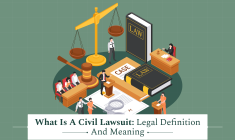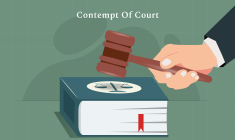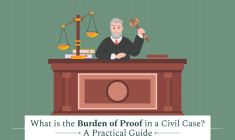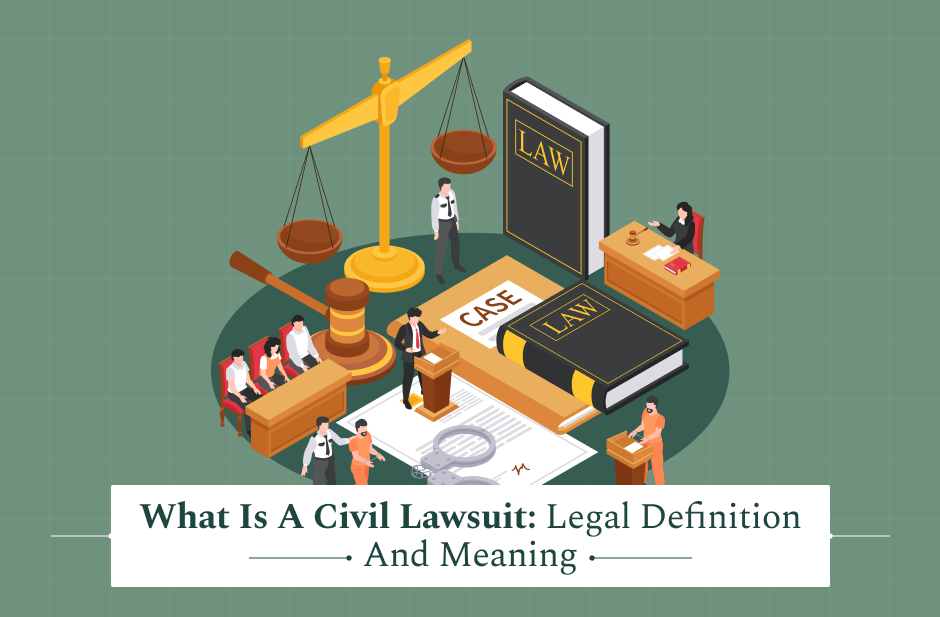If you have suffered an injury or financial loss due to another individual’s negligence, then you might be compelled to file a civil lawsuit. While criminal cases are seeking to punish the offense, a civil lawsuit is seeking to put the offending party in a situation where they were before the harm was inflicted.
It is a simple way of settling disagreements in America.
This article will walk you through what is a civil lawsuit is and how crucial it is in the phases of civil litigation.
Additionally, we also provide guidelines that are essential to any person who may be considering or involved in a civil lawsuit.
What Is Civil Lawsuit?
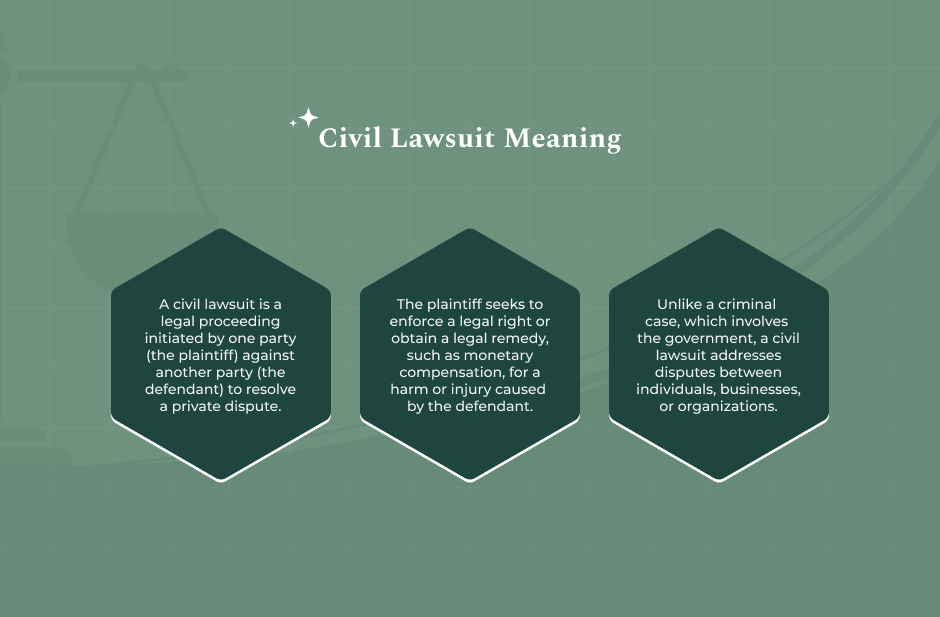
What is a civil lawsuit? A civil lawsuit is a court battle between two or more parties suing for:
- money damages (money pay) or
- other relief (e.g., enforcement of a contract).
The participants in the civil suit are typically private individuals, corporations, or government agencies. Civil suit does not pay with jail time. Rather, an emphasis is put on determining a remedy for a private wrong, according to the United States Courts.
The plaintiff is the one that registers the complaint in the suit. Yes, they are the ones who file it. On the other hand, the defendant is the party against whom the suit is brought.
What Is The Purpose Of A Civil Lawsuit?
The primary purpose of a civil lawsuit is to resolve disagreements over issues such as:
- contracts,
- land,
- torts (injury to individuals), and
- family relationships.
It provides a formal, routine process for private complainants to obtain redress and compel respect for their rights. Every civil lawsuit allows the court to weigh the evidence and officially hold someone liable for the harm inflicted.
Types Of Civil Lawsuits
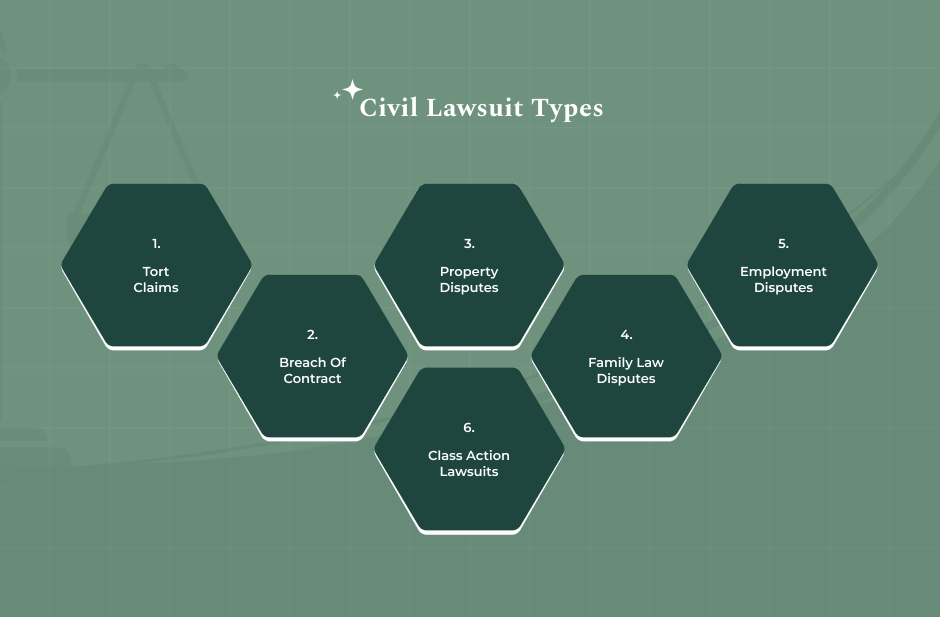
The field of civil lawsuits is very wide and covers virtually any type of non-criminal dispute.
1. Contract Disputes
They are among the most common types of civil lawsuits. They entail violation of written or oral contracts. For example, a firm that does not supply commodities as stipulated in an agreement for sale may be sued for a civil lawsuit.
2. Torts
Tort claims are negligence claims, such as an auto accident, or purposeful misconduct, such as defamation or battery. An injury claim is a form of general type of civil action that would be tort-based.
3. Property Disputes
These are examples of issues involving property and land. Some of them are cases of ownership, boundary markers, eviction of tenants, or property damages. Property disputes fit in a civil suit.
4. Family Law Cases
Although highly technical, family matters like divorce, custody, and support are actually a form of civil lawsuit. They are civil litigation because they are working with remedies and private parties’ rights.
5. Employment Disputes
Dispute of employment entails wrongful termination, employment discrimination, or wage and hour disputes. The employee will bring an action in civil court to obtain wages recovered or reinstated.
What Is The Civil Lawsuit Process?
It’s helpful to understand the timeline of a civil case so expectations can be managed. Cases are different, but in most instances, there is a standard pattern of events.
1. Filing a Complaint
The plaintiff initiates the action in civil court by filing a written complaint with the proper court. The complaint is detailed and indicates the plaintiff’s claims, the basis of the claim, and the relief (damages) sought.
A copy is served on the defendant following the filing of a process referred to as service.
2. Defendant’s Response
The defendant must respond to the complaint within the time period. The reply can be the answer, which responds point by point and in denial of the plaintiff’s allegations.
Or the defendant can have a pre-trial motion, say a pre-trial motion to dismiss the civil action if he believes that the claim lacks foundation in law.
Discovery is the longest phase in the chronology of a civil case. Here, the evidence and information are exchanged between the two parties. Written interrogatories, document requests, and testifying verbally under oath (depositions) are all engaged here.
How good the evidence found here is will generally constitute the victory or loss of the legal battle.
3. Pre-Trial Motions
Through discovery, the parties will normally file motions to resolve issues before trial. As an example, a motion for summary judgment requests a court to grant judgment to a party if uncontested facts obviously show they would win the case in civil law.
4. Trial
When the parties disagree, the case is argued. Evidence and testimony are presented to a judge or jury at this time. Defense is argued by the plaintiff’s lawyer, followed by the defense. The judge keeps proceedings in check with the rules of evidence.
5. Post-Trial Motions and Appeals
When a judgment is made after a trial, the loser will file post-trial motions to modify or overturn the judgment. Otherwise, they appeal to a higher court, challenging the court rulings in the civil lawsuit.
What Are The Damages In Civil Lawsuits?
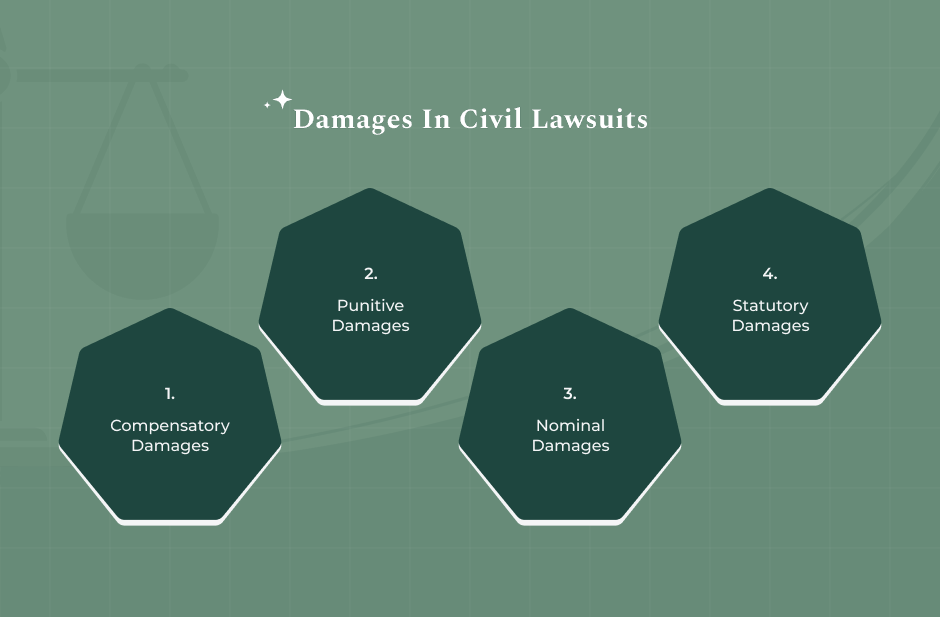
Most civil lawsuit actions pursue the recovery of money judgments in various forms, which are technically called damages in lawsuits.
1. Compensatory Damages
These damages are to indemnify the plaintiff for actual loss and expense to the defendant’s act. They cover medical charges, loss of wages, cost to repair property, and pain and suffering. They return the plaintiff to “wholeness.”
2. Punitive Damages
Courts award punitive damages to punish outrageous behavior and to deter the defendant and others from repeating the same behavior in the future. They are typically awarded only for outrageous, willful, or reckless behavior and can be staggering.
3. Nominal Damages
These are token damages, such as one dollar, recovered when a legal right has been violated, but where there was no real loss to the plaintiff. It is merely a ceremonial admission that the defendant was at fault.
4. Statutory Damages
Laws, particularly intellectual property or consumer protection laws, usually require a certain sum for damages against some offenses in actions. The required sum is referred to as statutory damages.
Read Also: How To Understand The Consequential Damages Clause In Your Contract?
What Are Alternative Dispute Resolution (ADR) In Civil Lawsuits?
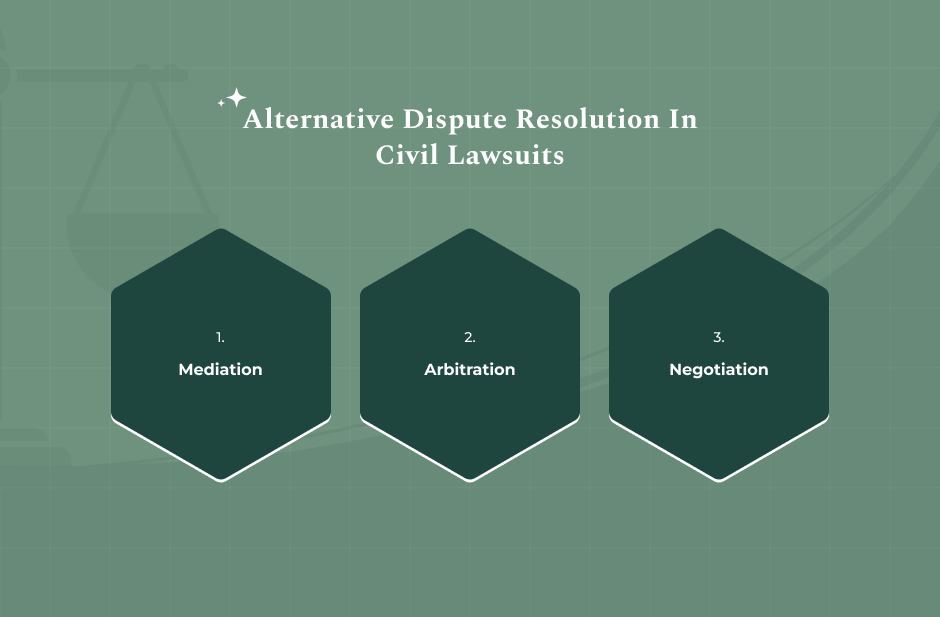
There are no civil cases that have to appear before a judge. Alternative dispute resolution (ADR) offers faster, cheaper, and less confrontational means of resolving a legal dispute.
1. Mediation
The plaintiff and defendant are guided by a third party, an impartial mediator. The mediator does not deliver a formal decision but brings the parties through areas of agreement and similarity and to an agreement on their own.
2. Arbitration
In arbitration, the parties’ dispute is presented to an impartial member of the parties. The final, binding instruction is given by the arbitrator, just like a judge. Arbitration is typically quicker and less formal than a trial court.
3. Negotiation
The simplest ADR is direct negotiation between parties (or attorneys) to an agreement. Negotiation may occur along the entire spectrum of the civil lawsuit.
What Is The Role Of Legal Professionals?
Handling a civil lawsuit usually requires a dedicated legal team.
1. Plaintiff’s Attorney
The attorney of the plaintiff handles the plaintiff of the civil case. They handle the investigation of the case, filing the complaint, the discovery process, and the trial of the case.
2. Defendant’s Attorney
The defendant’s attorney handles the defendant of the civil case. They set up the defense, rebut the plaintiff’s evidence, and represent the interest of the defendant in the civil case.
3. Judges
Judges overrule all judicial proceedings, decide motions and objections, and see to it that the trial is run in the proper legal way. They are the last word on the law in a particular case.
4. Juries
Juries render case facts and issue verdicts in certain civil suit cases. They ascertain guilt and the amount of damages to be paid.
Read Also: What Is The Burden Of Proof In A Civil Case? A Practical Guide
What Are The Common Defenses In Civil Lawsuits?
There are several methods by which defendants can dispute a civil claim.
1. Denial of Allegations
The defendant disputes the allegations of the plaintiff, and the plaintiff must prove every aspect of his/her civil claim.
2. Affirmative Defenses
Affirmative defenses assert new facts that justify or excuse the conduct of the defendant, even if everything the plaintiff sued for in his/her complaint is true. Consent and self-defense are a couple of examples.
3. Statute of Limitations
This is a full defense. It alleges the civil action is brought outside the statute of limitations period during which to bring the action because the statute of limitations period has expired. This is a full defense.
4. Contributory or Comparative Negligence
This defense asserts that plaintiff’s fault was the cause in fact of the injury. Where the plaintiff is comparatively at fault, damages in lawsuits awarded are diminished or, in some cases, entirely eliminated.
Tips For Civil Suit Participants
Defendant or plaintiff, if you keep these tips in mind, you are more likely to win every case in court.
1. Document Everything
Document all correspondence, accidents, spending, and medical treatments surrounding the case. Putting everything in writing is the open door to any winning civil case.
2. Know the Legal Process
Learn the civil lawsuit timeline process. Understanding what to expect reduces stress and enables you to make more informed decisions with your attorney.
3. Get Legal Advice
While it is possible to bring a civil lawsuit without the representation of an attorney, the intricacy of civil lawsuit cases leads one to consult a professional civil lawsuit attorney (texascourthelp.gov). A civil lawsuit attorney will guide you through the process and protect your rights.
4. Consider ADR Early
Did you know that there are other modes of conflict resolution? Yes, mediation or arbitration are some other alternatives. These techniques are time-saving, money-saving, and save you stress.
Read Also: Criminal Versus Civil Lawsuits: Everything You Need To Know
Frequently Asked Questions (FAQs):
A Civil lawsuit is a process of law that aims to protect one’s commercial as well as personal rights. Many find the process to be lengthy. However, it is simply a system that delivers justice and sometimes, befitting damages to harmed individuals.
Ans. 18 months to 3 years is the usual time that it takes for a complaint to reach its verdict. However, this is the case in a typical civil matter.
Notably, simple small claims usually reach the verdict stage in as little as six months. Again, a complex class action could take up to five years or more.
Ans. In a civil case, the standard of proof is preponderance of the evidence, and thus the plaintiff would only need to prove evidence that it is more likely than not (over a 50% chance) that the defendant did the crime. Comparison is a criminal case that has proof beyond a reasonable doubt.
Ans. Yes, but it is so much harder. You usually have to serve a Notice of Claim in such instances within a very short time limit (perhaps 30 to 90 days) before you are legally in a position to bring the civil action.
Ans. E-discovery is the collection, processing, and production of electronically stored information (ESI) in discovery. It includes emails, texts, and social networking websites. E-discovery has pushed raw cost and volume of modern civil litigation into astronomical realms.
Ans. A plaintiff is the person who registers the civil action. They do so because they are suing the defendant to arrive at a remedy. A petitioner institutes the case, and they also ask for a special type of remedy. Moreover, in a family law case, there are petitioners (for example, in a divorce case).
